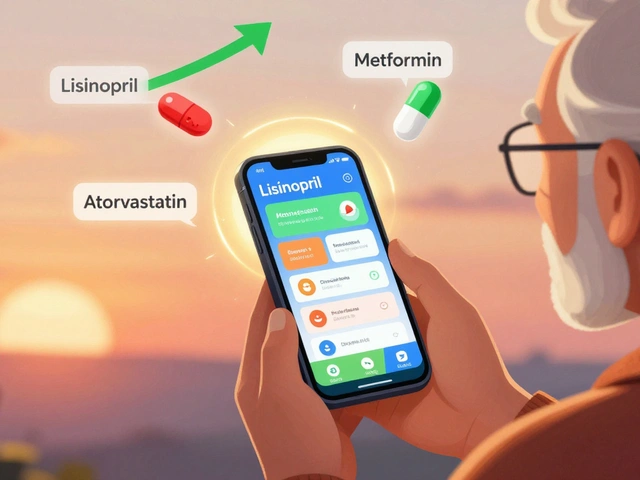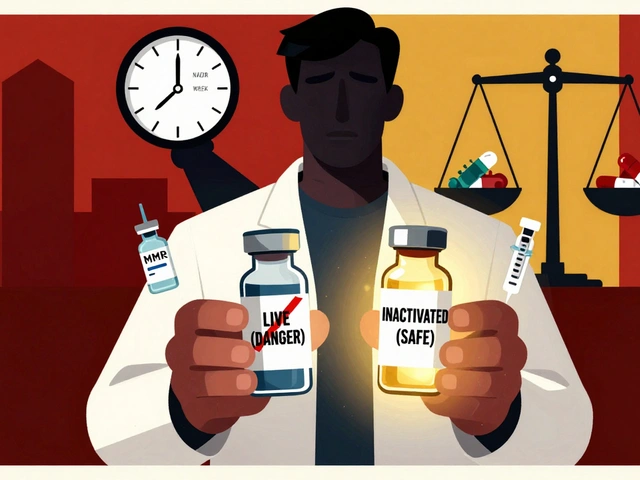Phenazopyridine is a urinary tract analgesic that relieves pain, burning, and urgency caused by urinary tract infections (UTIs) or other irritative conditions. It works locally in the bladder, providing quick symptom relief without treating the underlying infection. While it can make you feel better in a matter of hours, using it correctly matters - wrong doses or timing can lead to unpleasant side effects or even dangerous reactions. This guide walks you through the who, what, when, and how of phenazopyridine, so you can get relief safely.
When Is Phenazopyridine Used?
Urinary Tract Infection (UTI) is the most common reason doctors prescribe phenazopyridine. It’s indicated for short‑term relief of burning, urgency, and frequency caused by bladder inflammation, whether the infection is bacterial, viral, or due to catheter irritation. The drug does not cure the infection; antibiotics remain essential.
Other off‑label situations include painful hematuria from kidney stones or post‑operative bladder spasms, but use outside label instructions should always be clinician‑approved.
How Phenazopyridine Works
The molecule is excreted unchanged into the urine, where it acts on the mucosal lining of the urinary tract. By desensitizing sensory nerves, it blocks the pain signal that would otherwise travel to the brain. Because it stays in the urine, systemic absorption is minimal, which is why side effects usually stay confined to the urinary system or blood cells.
Standard Dosage Guidelines
Dosage depends on age, kidney function, and whether you’re taking other medicines. Below is a quick reference you can print out or save on your phone.
| Population | Typical Dose | Maximum Daily Dose | Special Notes |
|---|---|---|---|
| Adults (≥18 years) | 200mg orally every 6hours | 800mg per day | Do not exceed 2days without physician review. |
| Children 6‑17 years | 100mg orally every 6hours | 400mg per day | Only if prescribed; avoid in children <12years without guidance. |
| Elderly (≥65 years) with normal renal function | 200mg every 8hours | 600mg per day | Monitor for confusion or dizziness. |
| Renal impairment (CrCl <30mL/min) | Half the standard adult dose | 400mg per day | Use only under medical supervision. |
These numbers follow the FDA‑approved labeling and the latest clinical pharmacology handbook (2024 edition). Remember: phenazopyridine is meant for short‑term use-typically no more than two days-unless a doctor says otherwise.
How to Take It Properly
- Swallow the tablet whole with a full glass of water. Do not crush or chew; the coating helps release the drug in the bladder.
- Take doses at evenly spaced intervals (every 6hours for adults). Setting alarms on your phone helps keep the schedule.
- Stay well‑hydrated (at least 2L of fluid per day) to ensure the drug reaches the bladder and to prevent concentrated urine, which can worsen side effects.
- Avoid taking phenazopyridine with antacids or high‑calcium supplements, as they may slightly reduce absorption.
Safety Checks: Contraindications & Cautions
Contraindication means you should never start the drug. Phenazopyridine must be avoided in the following situations:
- Known hypersensitivity to phenazopyridine or any p‑aminobenzoic acid derivatives.
- Severe liver disease (Child‑Pugh Class C) - the drug’s metabolites can accumulate.
- G6PD deficiency - increased risk of hemolysis.
- Pregnancy (especially 1st trimester) and breastfeeding, unless the benefits outweigh the risks.
If you fall into any of these groups, discuss alternatives like ibuprofen (for pain) or methenamine (for prophylaxis) with your clinician.
Drug Interactions to Watch
Phenazopyridine is mostly excreted unchanged, but it can still affect or be affected by other medicines:
- NSAIDs (e.g., ibuprofen, naproxen) - concurrent use may increase the risk of kidney irritation.
- Warfarin - rare reports of enhanced anticoagulant effect; monitor INR closely.
- MAO inhibitors - theoretical risk of hypertensive episodes; avoid unless absolutely necessary.
- Rifampin - may increase hepatic metabolism of phenazopyridine, lowering its efficacy.
Always hand your pharmacist a complete medication list, including over‑the‑counter supplements.

Potential Side Effects and When to Seek Help
Most side effects are mild and resolve after stopping the drug:
- Orange‑red or brown urine - harmless but can stain clothing; warn family members.
- Headache, dizziness, or mild GI upset.
Serious but rare reactions include:
- Methemoglobinemia - a condition where oxygen transport in blood is impaired. Symptoms: cyanosis, shortness of breath, chocolate‑brown blood. Seek emergency care if any appear.
- Severe allergic reaction (rash, swelling, anaphylaxis).
- Hemolytic anemia in G6PD‑deficient patients.
Because the drug can discolor urine, doctors sometimes mistake it for hematuria. If you’re unsure, run a dipstick test; phenazopyridine will not affect the result for blood.
Special Populations
Children
Pediatric Dosage is half the adult dose, but many pediatricians prefer alternative analgesics due to limited safety data below age six. If a child under six needs symptom relief, a low‑dose ibuprofen regimen is typically recommended.
Elderly
Age‑related decline in renal clearance can raise drug levels. Use the every‑8‑hour schedule and watch for confusion, especially if the patient is also on anticholinergics.
Renal Impairment
Reduced creatinine clearance means phenazopyridine stays longer in the bloodstream, increasing risk of systemic side effects. Dose‑adjust by 50% and limit therapy to a single day unless labs are closely monitored.
How Phenazopyridine Compares to Other Urinary Analgesics
| Drug | Onset of Relief | Typical Duration | Key Contraindications |
|---|---|---|---|
| Phenazopyridine | 30‑60minutes | 4‑6hours per dose | G6PD deficiency, severe liver disease |
| Ibuprofen (systemic NSAID) | 45‑90minutes | 6‑8hours | Peptic ulcer, CKD stage4‑5 |
| Methenamine | 2‑3hours (requires acidic urine) | 6‑8hours | Alkaline urine, severe renal failure |
Phenazopyridine gives the fastest local relief but is limited to short courses. Ibuprofen provides systemic pain control and anti‑inflammatory benefit, while methenamine works as an antiseptic in acidic urine. Choose based on your infection type, kidney health, and how long you need relief.
Practical Tips for Patients and Caregivers
- Set a medication alarm on your phone the first day you start phenazopyridine; missing a dose can cause rebound pain.
- Keep a short symptom diary - note urine color, pain level, and any new side effects. This helps your doctor decide whether to continue or switch therapy.
- If you notice orange‑red urine, inform anyone handling laundry; use cold water to minimize staining.
- Never exceed two days without a follow‑up appointment. Prolonged use can mask worsening infection.
- Store tablets at room temperature, away from moisture. Discard any pills that are discolored or crumbly.
Quick Reference Cheat Sheet
- Phenazopyridine dosage: 200mg every 6h (adults), max 800mg/day.
- Duration: ≤2days unless directed.
- Key warning: avoid if you have G6PD deficiency or severe liver disease.
- Watch for: orange urine, headache, rare methemoglobinemia.
- Ask your doctor about alternatives if you’re pregnant, nursing, or have kidney problems.
Frequently Asked Questions
Can I take phenazopyridine with antibiotics?
Yes. Phenazopyridine is designed to be used alongside antibiotics for UTIs. The analgesic does not interfere with most common antibiotics (e.g., trimethoprim‑sulfamethoxazole, nitrofurantoin). However, always tell your prescriber about every medication you’re on.
Why does my urine turn orange?
Phenazopyridine is excreted unchanged, and its pigment colors urine red‑orange. It’s harmless and disappears a day after stopping the drug. If you suspect blood in urine, a dip‑stick test can differentiate the cause.
Is phenazopyridine safe for children?
The drug is approved for children 6years and older at half the adult dose. For kids under six, most clinicians prefer ibuprofen or acetaminophen because safety data for phenazopyridine are limited.
What should I do if I develop shortness of breath?
Shortness of breath can signal methemoglobinemia, a rare but serious side effect. Seek emergency medical care immediately; treatment may involve supplemental oxygen and specific antidotes.
Can I take phenazopyridine if I have kidney disease?
If your creatinine clearance is below 30mL/min, halve the usual adult dose and limit therapy to a single day. Always have your doctor monitor kidney labs while you’re on the medication.
Is it okay to drink alcohol while taking phenazopyridine?
Moderate alcohol isn’t known to interact directly, but both alcohol and phenazopyridine can irritate the bladder. If you notice heightened pain or dizziness, skip the drink until you finish the course.







Tracy McKee
September 22, 2025 AT 03:54This guide is fine but nobody tells you how fast your pee turns orange like a neon sign. I thought I was dying. No warning. Just pure chaos. Don't be that person who takes it without reading the fine print.
Abigail M. Bautista
September 23, 2025 AT 02:49I took it once. My urine looked like a highlighter exploded. Not worth it.
Rohan Puri
September 24, 2025 AT 12:56Why even use this when antibiotics work faster? This is just a bandaid for people who hate taking real medicine. Also why is the table cut off? Lazy content
Mandeep Singh
September 26, 2025 AT 05:26In India we just drink coriander water and pray. No pills needed. Western medicine overcomplicates everything.
Chris Bellante
September 27, 2025 AT 06:26Phenazopyridine's mechanism is fascinating-local anesthetic action on urothelial sensory afferents with negligible systemic bioavailability. But let’s be real: if you're popping this for more than 48h without clearing the infection, you're playing with fire. Pyuria + orange pee = red flag, not relief.
Nicole Manlapaz
September 27, 2025 AT 19:44You got this! 💪 Just remember: this isn't a cure, it's a pit stop. Get your antibiotics, drink water like it's your job, and don't panic when your pee looks like a sunset. You're not dying, you're healing. 🌅
Frederick Staal
September 29, 2025 AT 03:40I can't believe this drug is even available OTC in some states. The FDA should have banned this decades ago. Look at the side effects: hemolytic anemia, methemoglobinemia, hepatotoxicity. People treat this like candy. It's a chemical grenade with a pretty label.
erin orina
September 30, 2025 AT 06:18I used this after my surgery and honestly? Life saver. 😊 My bladder was screaming and this quieted it right away. Just don't forget to tell your doc you're taking it. And yeah, your pee turns orange 🤪 but that's just your body saying thank you.
Lisa Uhlyarik
October 1, 2025 AT 07:22This whole system is broken. We're not supposed to need painkillers for our bladders. Why don't we fix the root cause? Why do we just numb the signal? It's like silencing the alarm instead of fixing the fire. We've lost touch with the body's wisdom
Kelley Akers
October 1, 2025 AT 12:36Honestly if you're relying on phenazopyridine, you probably didn't hydrate enough in the first place. This is the pharmaceutical equivalent of slapping a Band-Aid on a broken leg. Classy.
JOANNA WHITE
October 2, 2025 AT 10:11I've been using this for years after UTIs and it's honestly the only thing that makes me feel human again. The orange pee is wild but it's a small price. Just don't take it longer than 2 days. And yeah, drink water. Always drink water. 💧
Peggy Cai
October 3, 2025 AT 16:29You think this is about medicine but it's about control. We're taught to numb pain instead of listening to it. The body is screaming and we give it a chemical mute button. What are we afraid of feeling?
Taylor Smith
October 5, 2025 AT 03:19Just curious-does anyone know if this interacts with cranberry supplements? I take those daily and don't wanna risk anything. Thanks!
Tammy Cooper
October 5, 2025 AT 18:02Orange pee? Oh sweet jesus I thought I was leaking dye. I called my mom in hysterics. She said 'honey that's just the magic potion' and hung up. I'm still traumatized. 🍊😭
Alyssa Hammond
October 7, 2025 AT 08:17This entire guide is a corporate lie. Phenazopyridine is designed to keep you docile while the real infection spreads. You think you're getting better? No. You're being sedated so you don't ask why your doctor won't run the full panel. The orange urine? That's the dye they use to track compliance. They're watching you. Always watching.
Jill Amanno
October 7, 2025 AT 23:43Pain is a teacher. We don't need to silence it-we need to understand it. This drug is the opioid of the urinary system. Quick fix, long-term ignorance. We're not healing. We're just hiding. And the system loves that because it means repeat visits. Wake up.
Kate Calara
October 9, 2025 AT 00:09They don't want you to know this but phenazopyridine was originally developed by a shadow pharma group linked to the CIA in the 70s to monitor dissidents through urine color changes. That's why it turns your pee orange. It's a tracking dye. Don't be fooled.